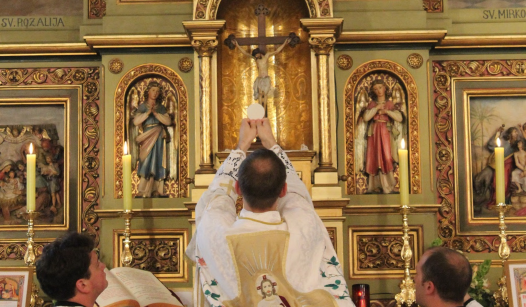The ongoing debate surrounding the Latin Mass has ignited passionate discussions among Catholics across the United States. While some may view this conflict as merely a matter of liturgical preference, it transcends the boundaries of tradition and touches on deeper issues of faith, identity, and the future of the Church.
In recent years, the Latin Mass—also known as the Extraordinary Form of the Roman Rite—has experienced a resurgence among certain groups of Catholics who feel a profound connection to its rich history and solemnity. This revival has not only sparked interest among traditionalists but has also drawn the attention of progressive Catholics who recognize the implications of this movement for the broader Church community.
At its core, the fight for the Latin Mass is emblematic of a larger struggle within the Catholic Church: the tension between tradition and modernity. For many, the Latin Mass represents a direct link to the Church’s historical roots, a time when the liturgy was celebrated in a language that transcended regional dialects and cultural differences. Supporters argue that the Latin Mass fosters a sense of reverence and awe that is sometimes lacking in more contemporary forms of worship.
Conversely, critics of the Latin Mass often argue that it can create divisions within the Church, fostering an “us versus them” mentality among congregants. They contend that the focus should be on inclusivity and accessibility, particularly for younger generations who may not have the same attachment to the traditions of the past. For many progressive Catholics, the call for a more modern liturgy is seen as necessary to engage a diverse and evolving faith community.
The Vatican’s recent decisions regarding the Latin Mass have further fueled this debate. In 2021, Pope Francis issued a motu proprio titled “Traditionis Custodes,” which placed restrictions on the celebration of the Latin Mass. This directive was met with mixed reactions—while some hailed it as a necessary step to promote unity and cohesion within the Church, others viewed it as an attack on their spiritual heritage and a sign of an increasingly authoritarian Church hierarchy.
As this conversation unfolds, it’s essential to recognize that both sides of the debate share a common goal: a desire for a vibrant and meaningful expression of faith. Progressive Catholics often advocate for a liturgy that resonates with contemporary issues, emphasizing social justice, inclusivity, and community engagement. Meanwhile, traditionalists argue that the Latin Mass offers a timeless encounter with the divine, one that can deepen a person’s faith and spiritual life.
Ultimately, the fight for the Latin Mass is not just about the form of worship; it is about the heart of the Catholic faith itself. It raises fundamental questions about what it means to be Catholic in the modern world. Can the Church embrace both tradition and innovation, or must it choose one path over the other? As Catholics navigate these complex issues, it is crucial to engage in respectful dialogue that honors diverse perspectives and seeks common ground.
In conclusion, the debate over the Latin Mass is a reflection of broader cultural and theological shifts within the Catholic Church. While the path forward may be fraught with challenges, it also presents an opportunity for growth and renewal. By fostering open conversations and understanding, Catholics can work towards a shared vision of faith that honors both the past and the future.
